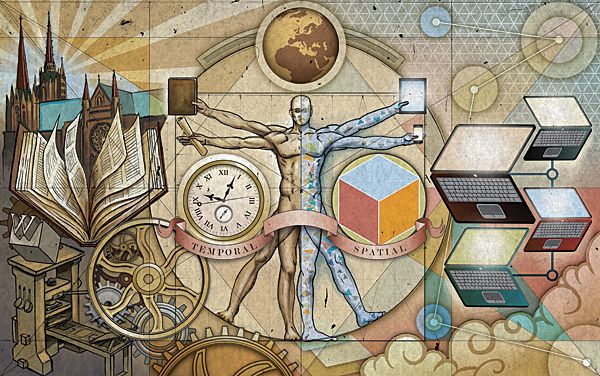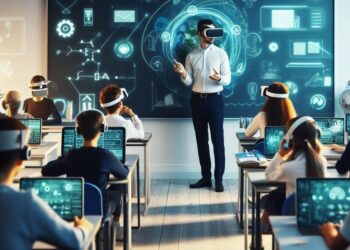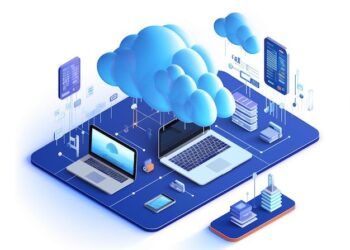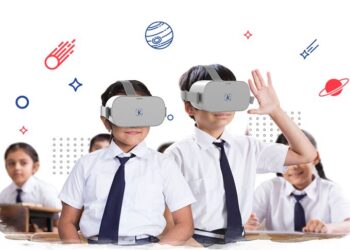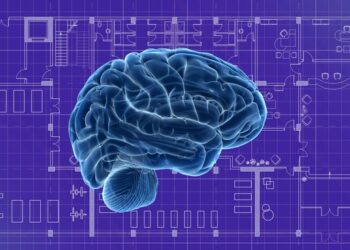The landscape of education is undergoing its most significant transformation in centuries. The traditional model—a teacher at a lectern, rows of passive students, and knowledge confined to the pages of a textbook—is rapidly being dismantled by the relentless and innovative force of educational technology, or EdTech. This is not merely about digitizing old methods; it’s a paradigm shift, a fundamental reimagining of how knowledge is delivered, absorbed, and applied. From kindergarten classrooms to corporate training modules, EdTech is forging a new era defined by personalization, accessibility, and engagement, creating unprecedented opportunities while also presenting complex challenges.
For educators, parents, and learners, understanding this revolution is no longer optional. The integration of digital tools into the learning process is accelerating, driven by advancements in artificial intelligence, cloud computing, and high-speed internet access. This technological wave promises to create more equitable and effective learning environments, catering to individual student needs in ways that were previously impossible. However, it also raises critical questions about data privacy, the digital divide, and the evolving role of the human teacher. This article will explore the multifaceted world of EdTech, dissecting its core components, analyzing its profound impact, and looking ahead to the future of learning in a digital-first world.
The Core Pillars of Modern EdTech
Educational technology is a broad term encompassing a vast array of tools and platforms. However, the current revolution is being driven by several key pillars that are fundamentally changing the learning experience.
A. Artificial Intelligence (AI) and Personalized Learning
Perhaps the most transformative force in EdTech is Artificial Intelligence. AI is the engine behind personalized learning, an approach that tailors educational content and pacing to the unique strengths, weaknesses, and learning styles of each individual student.
- Adaptive Learning Platforms: These are the flagship examples of AI in education. Platforms like Knewton and DreamBox use sophisticated algorithms to analyze a student’s performance in real-time. If a student struggles with a particular math concept, the platform can automatically provide remedial exercises, explanatory videos, or alternative approaches. Conversely, if a student masters a topic quickly, the system can introduce more advanced material, preventing boredom and fostering a continuous state of challenge and growth. This creates a truly individualized learning path for every user.
- Intelligent Tutoring Systems (ITS): AI-powered tutors provide students with immediate, one-on-one assistance outside the classroom. These systems can answer questions, guide students through complex problems, and offer targeted feedback, acting as a tireless digital teaching assistant available 24/7.
- Automation for Educators: AI is also a powerful tool for teachers. It can automate time-consuming administrative tasks such as grading multiple-choice assessments, tracking attendance, and managing student records. This frees up valuable time for educators to focus on what they do best: mentoring, inspiring, and providing high-level, nuanced instruction.
B. Gamification: Unlocking Motivation Through Play
Gamification is the strategic integration of game-like elements—such as points, badges, leaderboards, and narrative—into non-game contexts to enhance engagement and motivation. In education, it has proven to be a remarkably effective tool for making learning more enjoyable and compelling.
- Boosting Engagement: By framing lessons as quests or challenges and rewarding progress with virtual rewards, gamified platforms like Kahoot!, Classcraft, and Duolingo tap into intrinsic human desires for achievement, competition, and completion. This turns passive learning into an active, participatory experience.
- Safe Failure and Repetition: Games create a low-stakes environment where students are not afraid to fail. If they get an answer wrong, they can simply try again. This encourages persistence and mastery, as students are motivated to repeat a task until they succeed.
- Developing Soft Skills: Many educational games are designed to foster collaboration, critical thinking, and problem-solving skills as students work together to achieve common goals, mirroring real-world professional environments.
C. Immersive Learning: Virtual and Augmented Reality (VR/AR)
Virtual and Augmented Reality are breaking down the physical walls of the classroom, offering experiences that are deeply immersive and impactful.
- Virtual Reality (VR): VR headsets can transport students to entirely different worlds. A history class can take a virtual field trip to ancient Rome, a biology class can explore the intricate workings of a human cell from the inside, and aspiring surgeons can practice complex procedures in a risk-free virtual operating room. These experiences provide a level of understanding and context that text and videos simply cannot match.
- Augmented Reality (AR): AR overlays digital information onto the real world. Using a smartphone or tablet, students can point their device at a diagram of a frog in a textbook and see a 3D, animated model of its anatomy appear on their screen. AR apps can bring geometric shapes to life, show the mechanics of a jet engine, or create interactive museum exhibits.
The Broader Impact on the Educational Ecosystem
The rise of EdTech is sending ripple effects across the entire educational landscape, reshaping roles and challenging long-held assumptions.
A. The Evolving Role of the Teacher
A common fear is that technology will replace teachers. The reality is that EdTech is not replacing teachers but rather transforming their role. Instead of being the “sage on the stage” who simply delivers information, the modern educator is becoming a “guide on the side.” In an EdTech-enabled classroom, the teacher’s primary function shifts to facilitating learning, mentoring students, fostering critical thinking, and providing personalized support that technology alone cannot offer. They become curators of content, coaches, and orchestrators of complex, project-based learning experiences.
B. Accessibility and Lifelong Learning
EdTech is a powerful democratizing force. Massive Open Online Courses (MOOCs) from platforms like Coursera and edX have made university-level education from top institutions accessible to millions of people around the globe, often for free. Digital learning platforms provide flexible, self-paced opportunities for adults to upskill and reskill throughout their careers, responding to the dynamic demands of the modern workforce. This fosters a culture of lifelong learning that is essential for economic competitiveness.
C. Data-Driven Insights
EdTech platforms generate a massive amount of data on student performance and engagement. When used ethically and effectively, this data can provide invaluable insights for educators and administrators. Teachers can quickly identify which students are falling behind and which concepts the entire class is struggling with, allowing for timely interventions. At an administrative level, this data can inform curriculum design, resource allocation, and long-term educational strategy.
Navigating the Challenges and Ethical Considerations

Despite its immense potential, the widespread adoption of EdTech is not without its hurdles and ethical pitfalls. Addressing these issues is crucial for ensuring that the technology serves all students equitably and safely.
A. The Digital Divide
The most significant barrier to the promise of EdTech is the digital divide—the gap between those who have reliable access to technology and high-speed internet and those who do not. The COVID-19 pandemic starkly exposed this inequity, as students without adequate devices or connectivity were left behind during the shift to remote learning. Closing this gap requires a concerted effort involving investment in infrastructure, public-private partnerships, and policies that ensure every student has the tools they need to participate in the digital classroom.
B. Data Privacy and Security
EdTech platforms collect vast quantities of sensitive data about students, including their academic performance, learning behaviors, and even personal information. This raises serious concerns about privacy and security. Who owns this data? How is it being used? How is it being protected from cyberattacks? It is imperative that educational institutions and EdTech companies adhere to strict data protection regulations and are transparent with parents and students about their data policies.
C. Quality Control and Teacher Training
The EdTech market is flooded with thousands of apps, platforms, and tools, not all of which are pedagogically sound or effective. Educators need robust frameworks for evaluating and selecting high-quality digital resources. Furthermore, effective implementation requires more than just placing devices in classrooms. Comprehensive and ongoing professional development is essential to equip teachers with the skills and confidence they need to integrate technology into their teaching in a meaningful and transformative way.
The Future Horizon of Learning
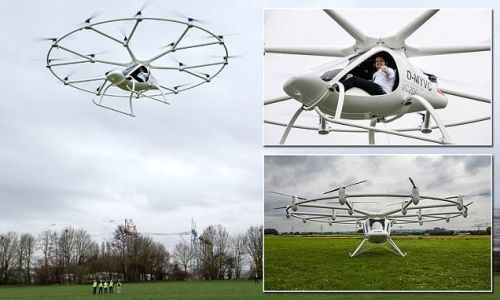
The EdTech revolution is still in its early stages. Looking ahead, emerging technologies will continue to push the boundaries of what’s possible. The integration of AI will become deeper, leading to truly dynamic curricula that adapt to individual learners in real time. The metaverse may offer persistent, collaborative virtual learning spaces. Biometric data could even be used to gauge student engagement and cognitive load, allowing for real-time adjustments to the learning environment.
In conclusion, Educational Technology is not a silver bullet, but it is an undeniably powerful catalyst for change. It is redefining the very nature of teaching and learning, shifting the focus from rote memorization to critical thinking, from standardized instruction to personalized journeys, and from passive reception to active creation. By embracing its potential while thoughtfully navigating its challenges, we can harness EdTech to build a more effective, equitable, and engaging future for learners of all ages, truly ushering in a new and revolutionary era of education.

